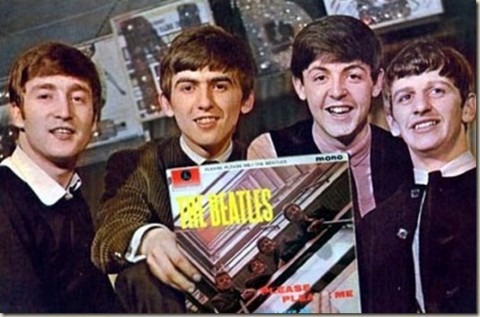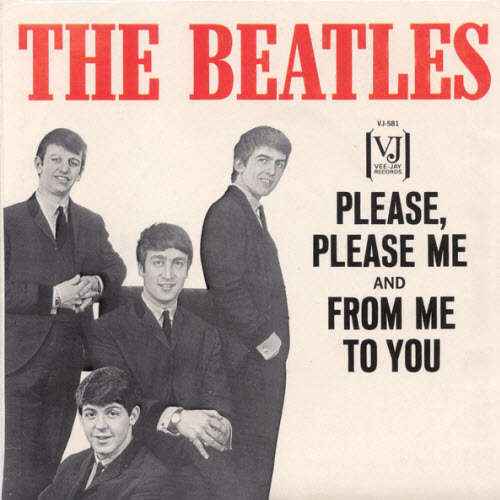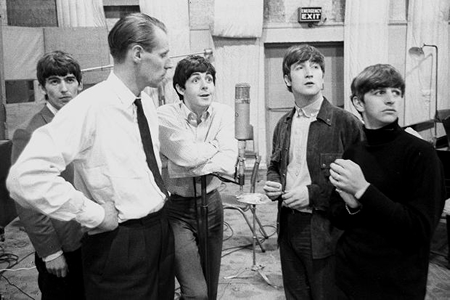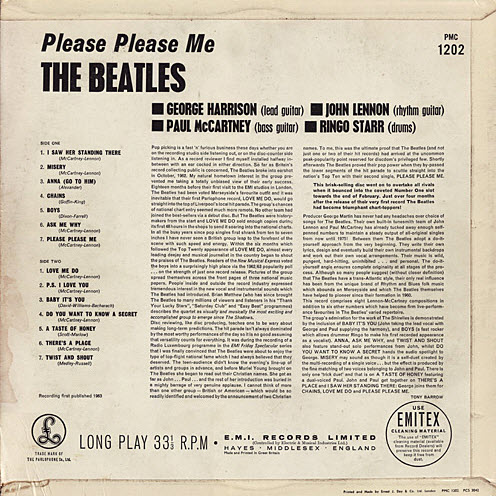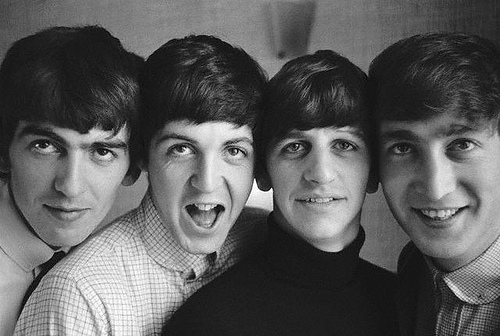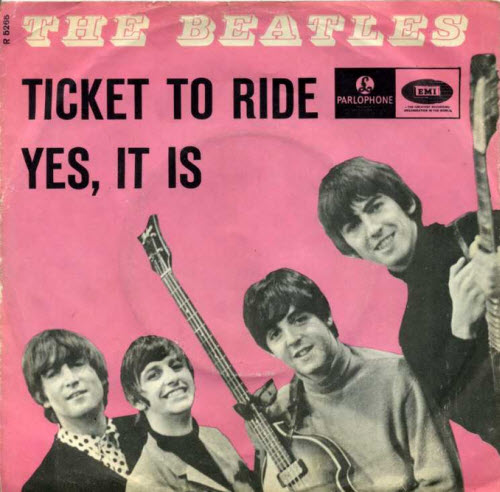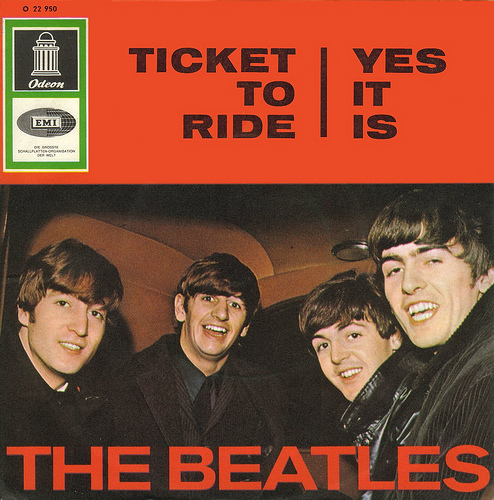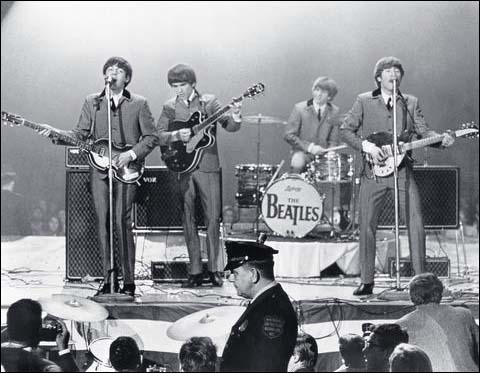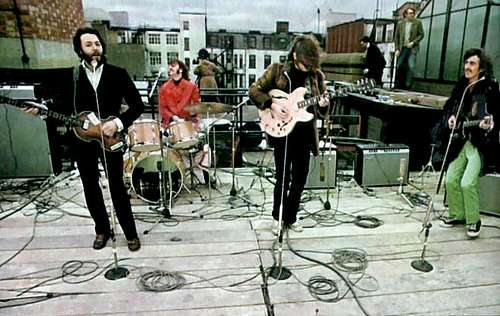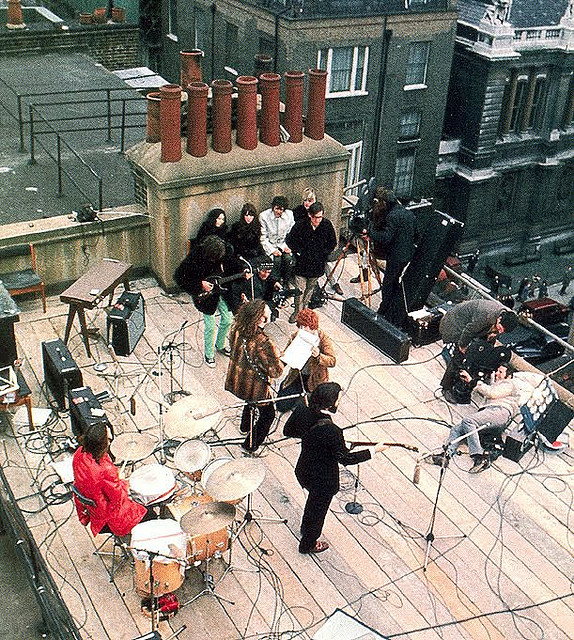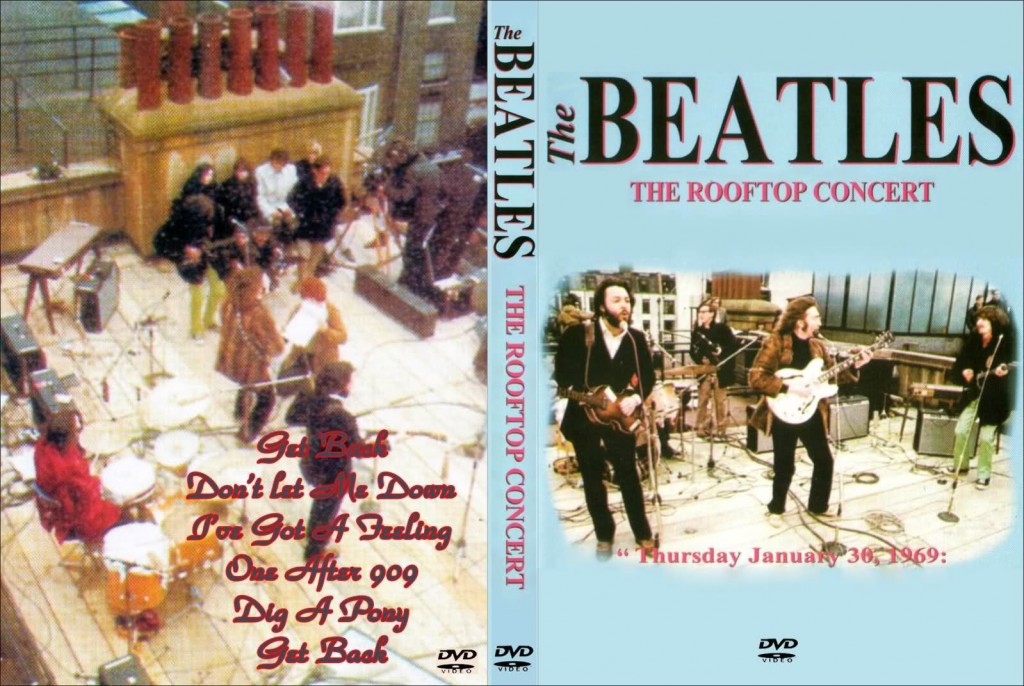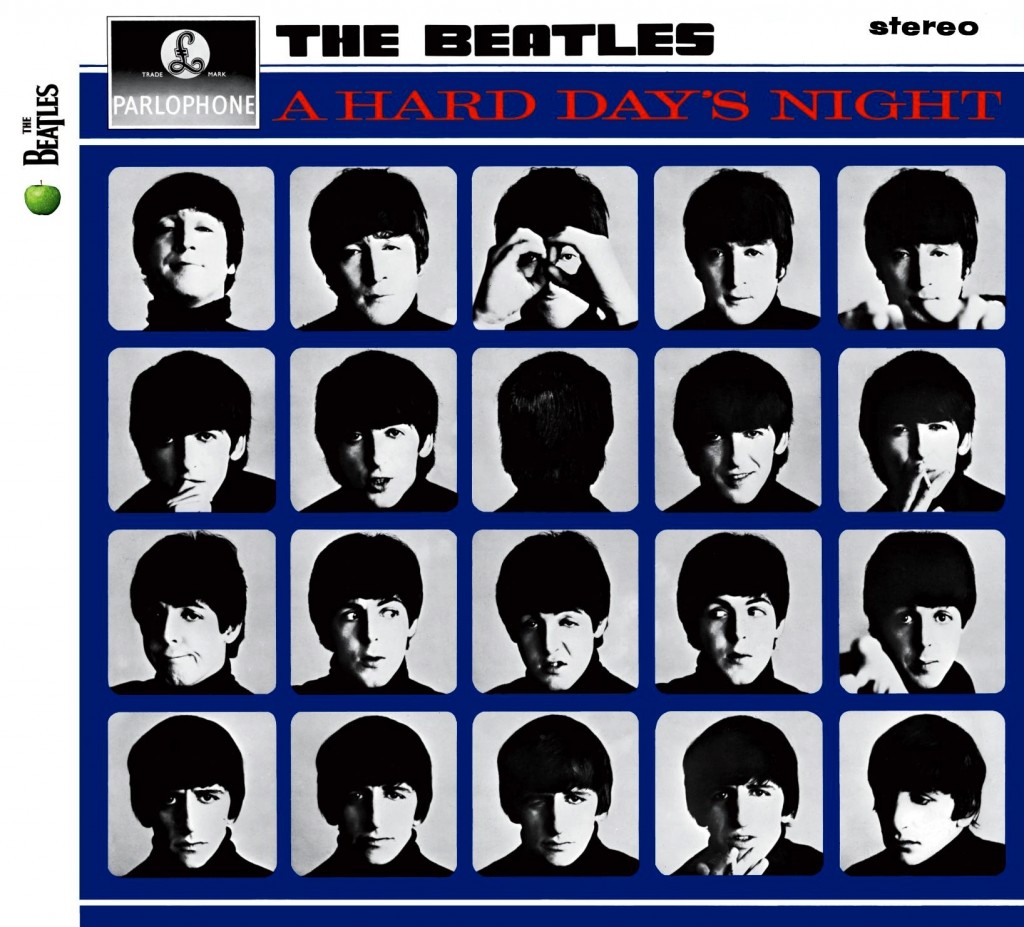
“We were different. We were older. We knew each other on all kinds of levels that we didn’t when we were teenagers. The early stuff – the Hard Day’s Night period, I call it – was the sexual equivalent of the beginning hysteria of a relationship. And the Sgt Pepper-Abbey Road period was the mature part of the relationship.”
– John Lennon (1980)
A Hard Day’s Night is the third album by The Beatles; it was released on July 10, 1964. The album is a soundtrack to the A Hard Day’s Night film, starring the Beatles. The American version of the album was released two weeks earlier, on 26 June 1964 by United Artists Records, with a different track listing. This is the first Beatles album to be recorded entirely on four-track tape, allowing for good stereo mixes.
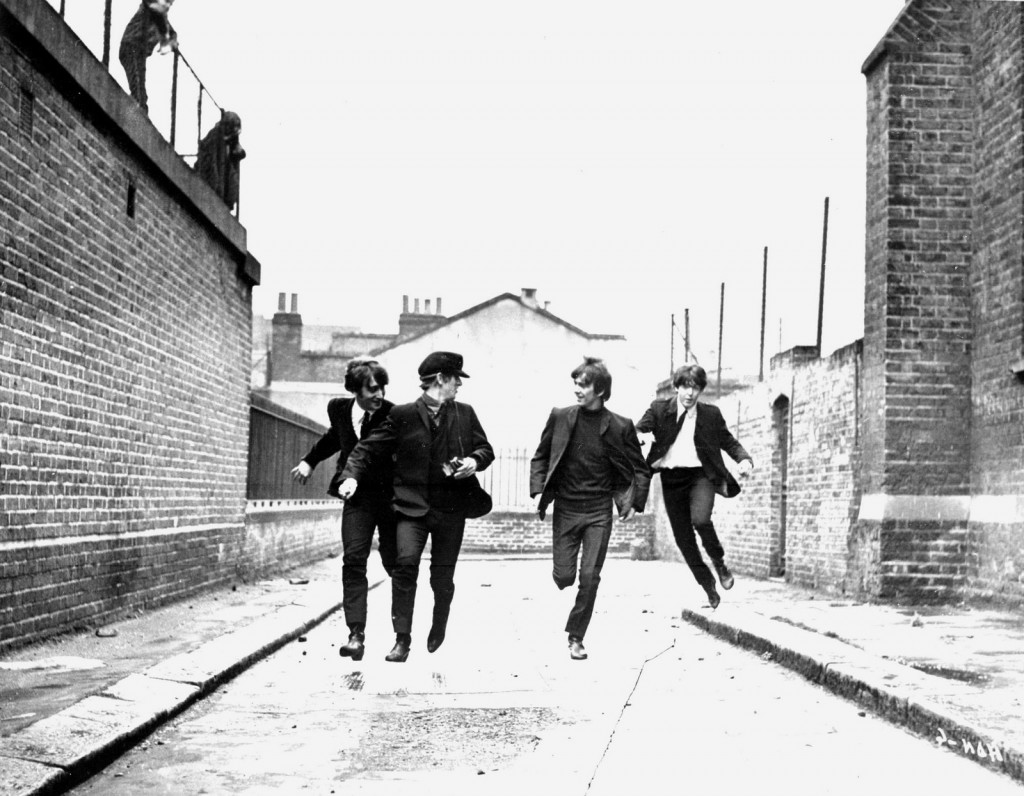
In 2000, Q placed A Hard Day’s Night at number 5 in its list of the 100 Greatest British Albums Ever. In 2003, the album was ranked number 388 on Rolling Stone magazine’s list of the 500 Greatest Albums of All Time.
The soundtrack songs were recorded in late February, and the non-soundtrack songs were recorded in June. The title song itself was recorded on April 16.
“…but A Hard Day’s Night is perhaps the band’s most straightforward album: You notice the catchiness first, and you can wonder how they got it later.
The best example of this is the title track– the clang of that opening chord to put everyone on notice, two burning minutes thick with percussion (including a hammering cowbell!) thanks to the new four-track machines George Martin was using, and then the song spiraling out with a guitar figure as abstractedly lovely as anything the group had recorded.”
– Tom Ewing, Pitchfork
A Hard Day’s Night (Paris, 1965):
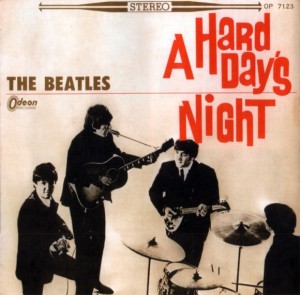
I saw the movie before I bought the album, and the pictures roll before my eyes as I listen to the album. The film is a masterpiece and so is the album.
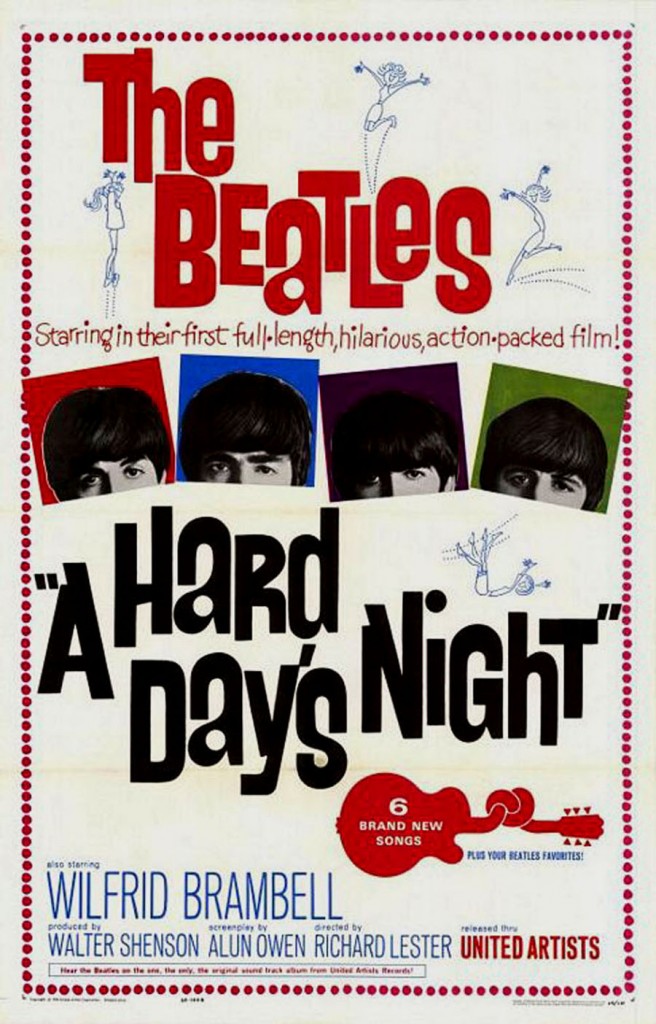
“Considering the quality of the original material on With the Beatles, it shouldn’t have been a surprise that Lennon & McCartney decided to devote their third album to all-original material. Nevertheless, that decision still impresses, not only because the album is so strong, but because it was written and recorded at a time when the Beatles were constantly touring, giving regular BBC concerts, appearing on television and releasing non-LP singles and EPs, as well as filming their first motion picture. In that context, the achievement of A Hard Day’s Night is all the more astounding.”
– Allmusic (Stephen Thomas Erlewine)
It was my first Beatles album, and even if it has lost it’s top spot on my Beatles list, I love it dearly. It always makes me happy when i put it on.
John Lennon was the main contributor to the album. He wrote A Hard Day’s Night, I Should Have Known Better, Tell Me Why, Any Time At All, I’ll Cry Instead, When I Get Home and You Can’t Do That.
He also wrote the majority of If I Fell and I’ll Be Back, and wrote I’m Happy Just To Dance With You with McCartney.
I Should Have Known Better (my favorite song on the album):
That doesn’t mean that Paul McCartney was left off the record. He wrote the ballads Things We Said Today plus And I Love Her , and lets not forget the lovely single Can’t Buy Me Love.
Can’t Buy Me Love:
As always the lines blur on some of the songs, but there are a lot of indications that this was the way the songs were composed, or rather, who wrote the songs.
“When we knew we were writing for something like an album John would write a few in his spare moments, like this batch here. He’d bring them in, we’d check ’em. I’d write a couple and we’d throw ’em at each other, and then there would be a couple that were more co-written. But you just had a certain amount of time.”
– Paul McCartney
A Hard Day’s Night is classic album that is a true testament to their collaborative writing powers, and, man, they had become a tight band!
– Hallgeir
Sources: Wikipedia, Allmusic, Pitchfork, John Lennon Interview with David Sheff in 1980, Many Years From Now by Barry Miles (book)





